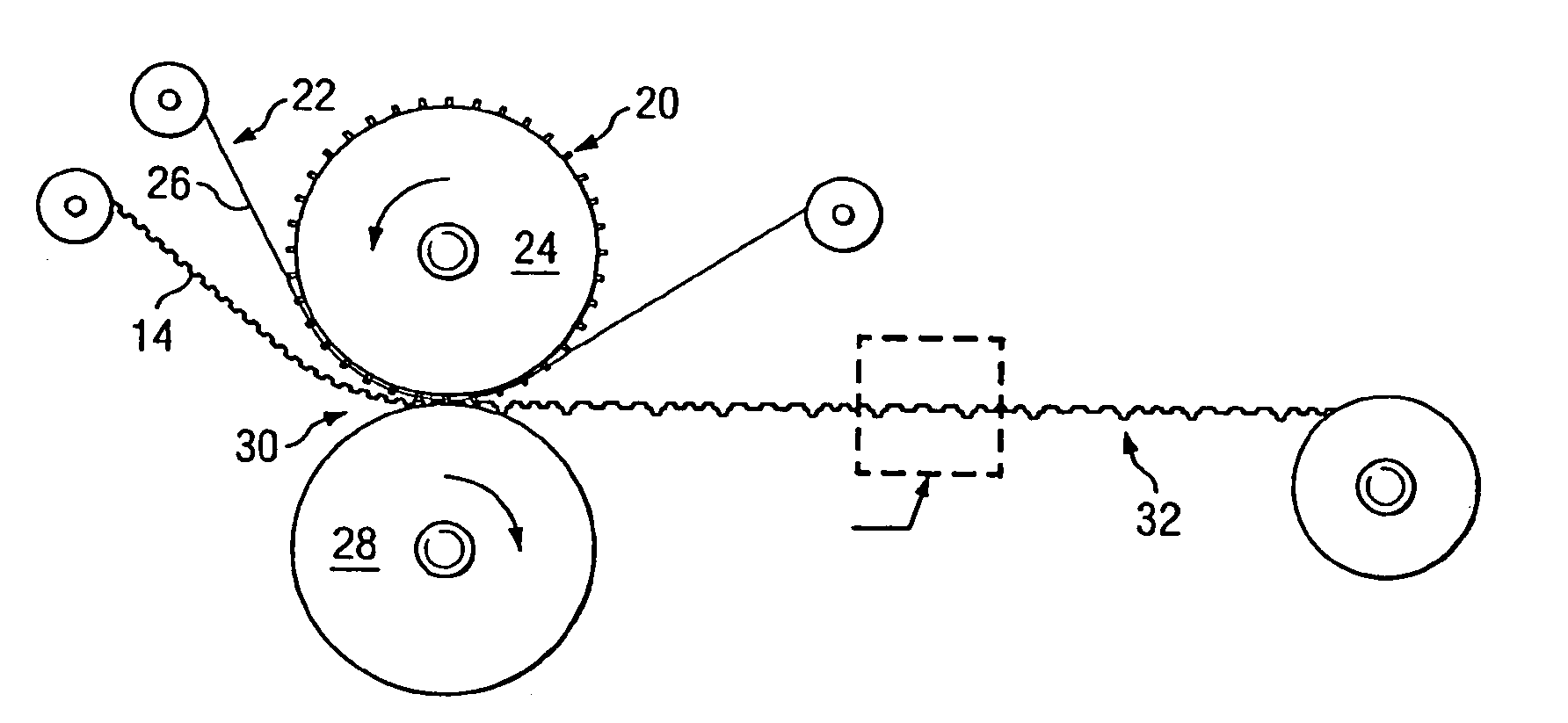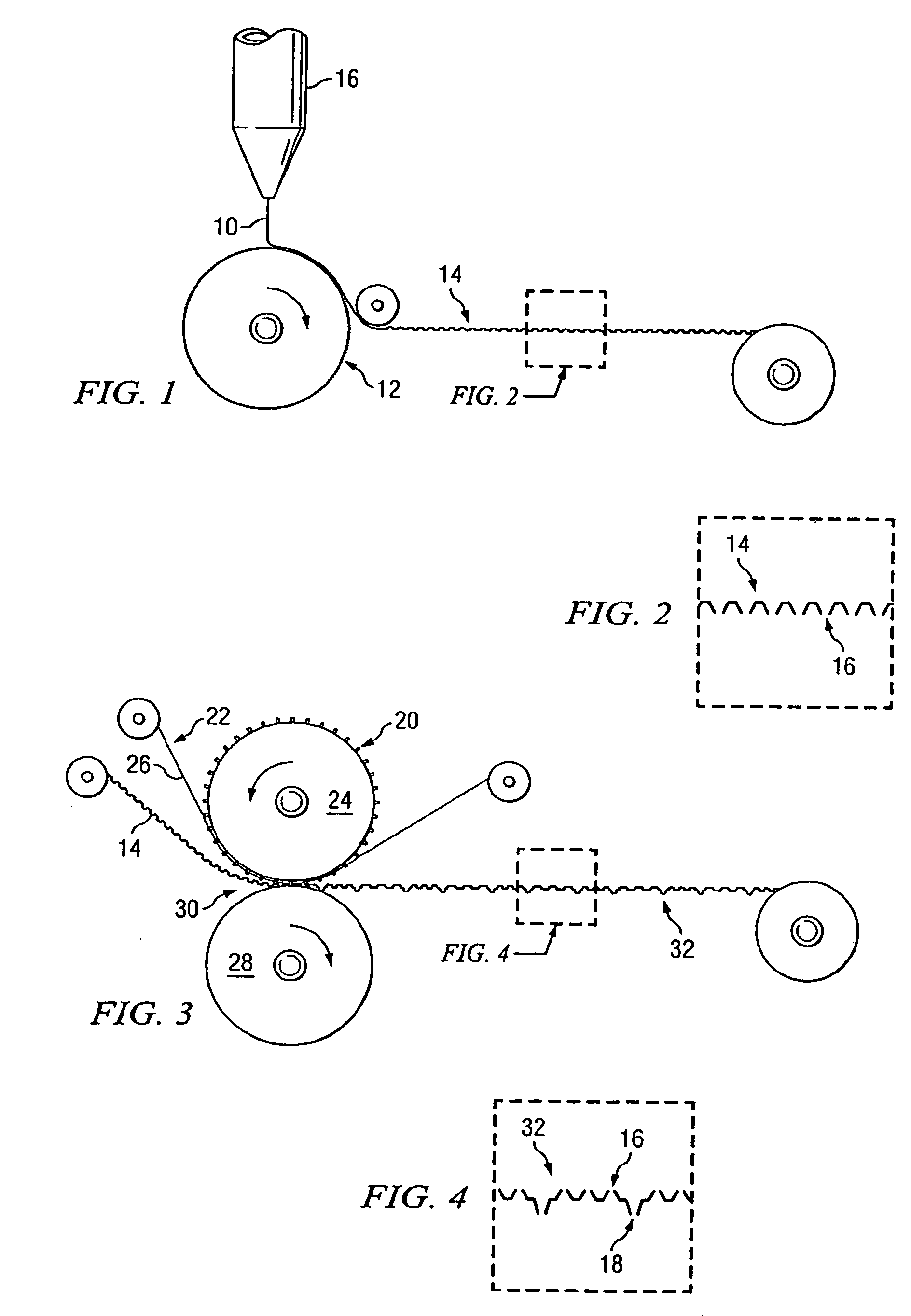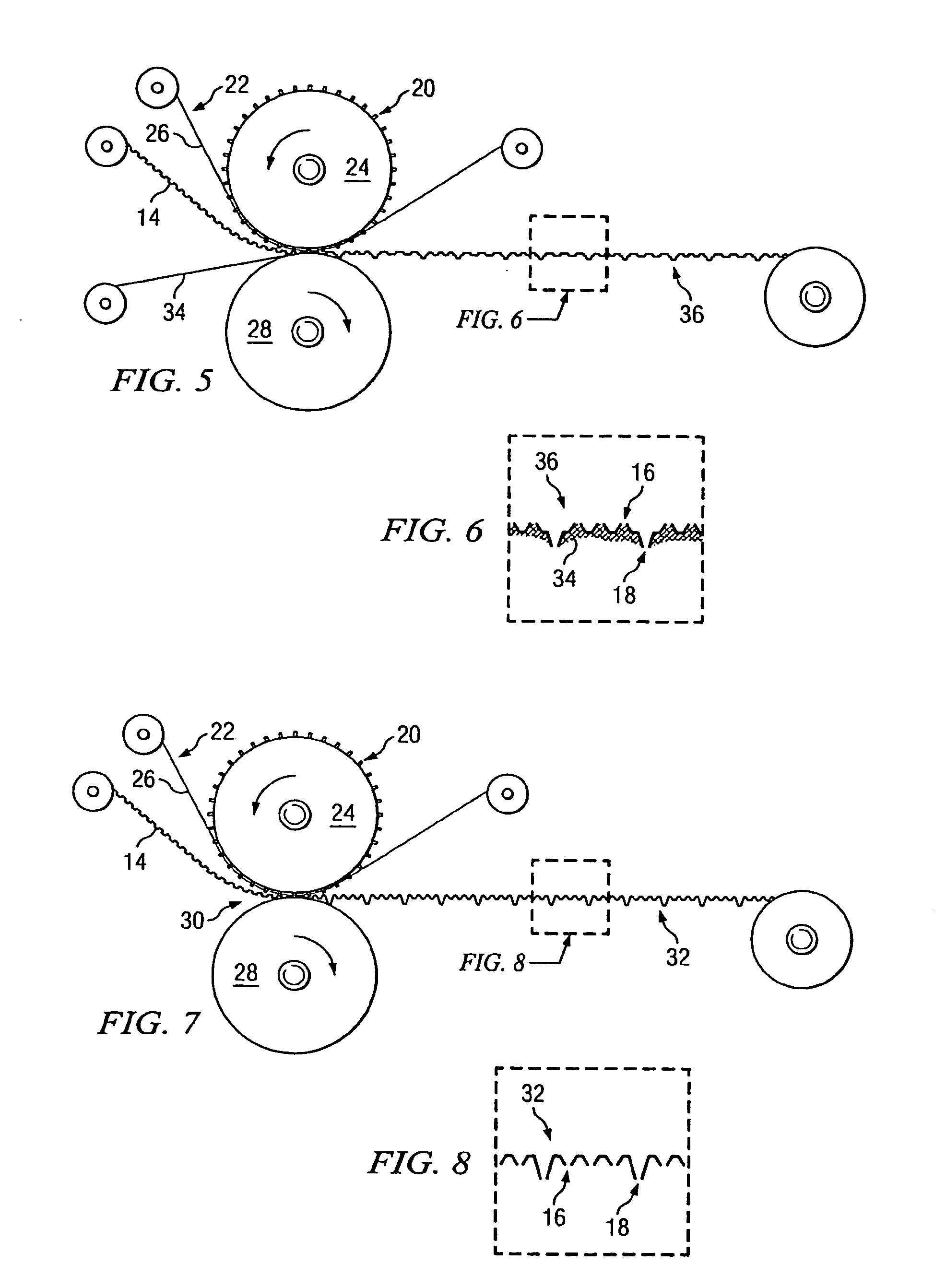Apertured material for use in absorbent articles
a technology of absorbent articles and absorbent materials, which is applied in the manufacture of butters, synthetic resin layered products, buttons, etc., can solve the problems of destroying micro-textures, difficult to create three-dimensional (“3d”) funnel-shaped apertures, and water approaches that are not high enough to create permanent deformation and stress annealing apertures
- Summary
- Abstract
- Description
- Claims
- Application Information
AI Technical Summary
Benefits of technology
Problems solved by technology
Method used
Image
Examples
example 7
[0037] Similar to Example 5, but with macro-apertures 18 with a spacing of about 11 apertures per square centimeter.
[0038] Example 8: Similar to Example 6, but with macro-apertures 18 with a spacing of about 11 apertures per square centimeter.
[0039] Strikethrough is a measure of the rate of absorption through a topsheet into an absorbent article and was conducted on finished articles as indicated below. In order to test strikethrough the original topsheet material is removed from the article and replaced with the topsheet material to be tested, except when testing the sample of the original material. The article is then insulted with a 10 ml sample of Menstrual Internal Synthetic Solution (MISS) and the strikethrough time is recorded using a Lister apparatus as described in EDANA Recommended Test Method ERT 150.5-02 Liquid Strike Through Time Test Method. Lower strikethrough numbers reflect a fast absorption and are desired in most absorbent articles.
[0040] Wetback is measured on...
PUM
| Property | Measurement | Unit |
|---|---|---|
| distance | aaaaa | aaaaa |
| operating temperature | aaaaa | aaaaa |
| weight | aaaaa | aaaaa |
Abstract
Description
Claims
Application Information
 Login to View More
Login to View More - R&D
- Intellectual Property
- Life Sciences
- Materials
- Tech Scout
- Unparalleled Data Quality
- Higher Quality Content
- 60% Fewer Hallucinations
Browse by: Latest US Patents, China's latest patents, Technical Efficacy Thesaurus, Application Domain, Technology Topic, Popular Technical Reports.
© 2025 PatSnap. All rights reserved.Legal|Privacy policy|Modern Slavery Act Transparency Statement|Sitemap|About US| Contact US: help@patsnap.com



